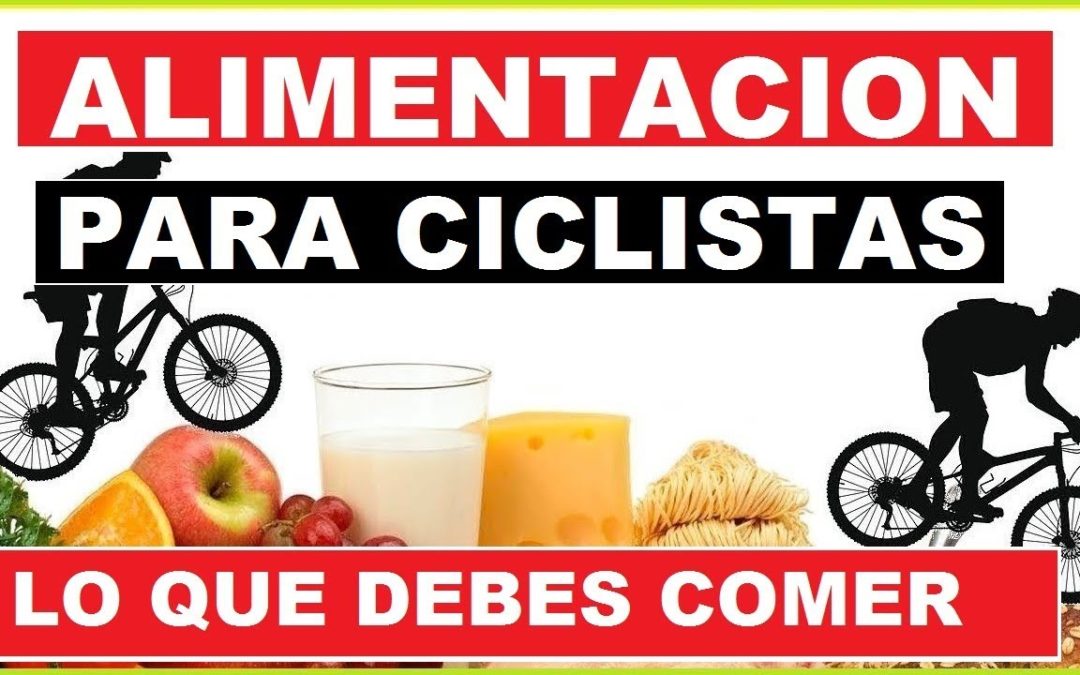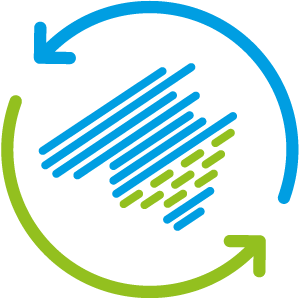What you should eat before, during and after.
A successful bike ride depends very much on what we eat in different moments in the day.
To get the most out of your cycling route, be it in mountain bike or road bike, a good alimentation is vital. It isn’t necessary to follow a strict diet but here we will tell you what you need to know about what you need to eat to enjoy your routes or races to the maximum
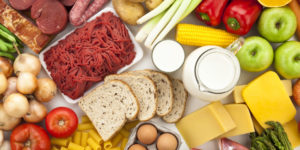
BEFORE
Two days before, it’s a good idea to eat more carbohydrates to store more glycogen. Eating carbohydrates in one of the main meals in the days beforehand is enough, but it’s even better if you can add this nutrient in other meals and snacks too.
For those who aren’t sure what food falls under this category, here are some examples..pasta, rice, cereals, fruit, honey, sugar , potatoes and other root plants
Just because you have eaten more carbohydrates doesn’t mean that we don’t need to eat other necessary aliments too, like proteins and fats, only that they will take up less room in your stomach. In fact, it is proven that protein intake (meat, fish, dairy and other animal foods) promotes a better absorption of carbohydrates. The fact that carbohydrates prevail in our diet does not mean that we should eat until we explode, we just must eat moderate amounts of food that have to be of a certain type.
We also recommend that you eat complex carbohydrates, which means that during digestion they are gradually released into the blood. These are mainly cereals, pasta and rice. The most complex carbohydrates are integral, rich in fiber, essential for the health of our intestines.
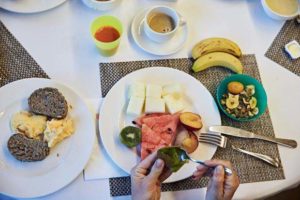 Breakfast prior to the route must be made at least two hours before, to allow for digestion, and must be made up mainly of carbohydrates, that your stomach is used to. Also, it’s a good idea to drink a large glass of water on an empty stomach, before breakfast so you will be properly hydrated, but it is also important that you remember to do the same in the days before, drinking water abundantly but without excess.
Breakfast prior to the route must be made at least two hours before, to allow for digestion, and must be made up mainly of carbohydrates, that your stomach is used to. Also, it’s a good idea to drink a large glass of water on an empty stomach, before breakfast so you will be properly hydrated, but it is also important that you remember to do the same in the days before, drinking water abundantly but without excess.
Try to make 5 small meals a day to help digestion.
BEFORE starting the route.
More or less one hour before starting you start pedalling and even just before starting (if it starts slowly) it is advisable to eat some fruit (banana and peeled apple are usually the best). You can also have an energy bar or gel.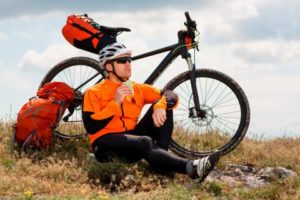
DURING
Once we are on the bike it is advisable to eat some light food every 30-40 minutes. The usual thing is fruit, nuts, dried apricots, raisins, gels or bars. Fizzy drinks can cause discomfort, although a cola can save your life, when you begin to feel dizzy and light-headed, thanks to its caffeine-backed sugar boost.
If you plan to spend the day and stop to eat, try to eat lightly. Also avoid foods that repeat a lot (garlic, peppers …) or very salty (anchovies) since they will make you thirsty, the best thing is a sandwich (especially for bread), ham, turkey, chicken or tuna, white rice or with milk, pasta without much seasoning, fruit, yogurt … To maintain hydration and also as an energy source, sports drinks, energy drinks or isotonic calls can be very useful. 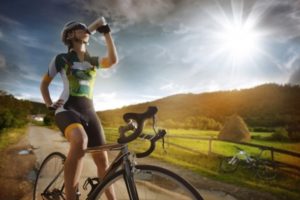 Try to drink every 15 or 20 minutes, it is better that you drink little frequently than a lot at once.
Try to drink every 15 or 20 minutes, it is better that you drink little frequently than a lot at once.
WHEN YOU FINISH
After half an hour and until two hours after finishing, a “metabolic window” opens. Basically, this is a period of time when the body is more receptive to capture nutrients and it is the ideal time to achieve a rapid recovery. The first of all you need to hydrate, then take simple carbohydrates (the opposite of complexes, so that they pass quickly to the blood and from there to the cells that will be demanding it). A good help in this aspect are sports drinks and a good alternative to these, are juices. When you sit at the table, again give priority to carbohydrates. Salads and vegetables are also important because of their high-water content, which will help to rehydrate.
AFTER
The next main meal of the day (possibly lunch) should follow guidelines similar to the previous ones but including more protein foods so that the muscles ‘regenerate’. If dinner is the food that follows the bike route, then combine carbohydrates and proteins, with vegetables or salad

